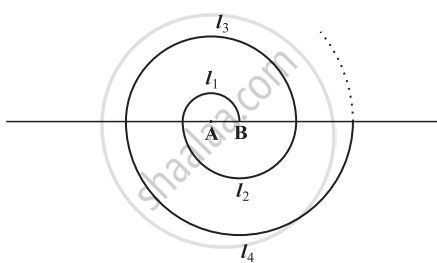Advertisements
Advertisements
प्रश्न
Find the sum of all natural numbers between 1 and 100, which are divisible by 3.
उत्तर
In this problem, we need to find the sum of all the multiples of 3 lying between 1 and 100.
So, we know that the first multiple of 3 after 1 is 3 and the last multiple of 3 before 100 is 99.
Also, all these terms will form an A.P. with the common difference of 3.
So here,
First term (a) = 3
Last term (l) = 99
Common difference (d) = 3
So, here the first step is to find the total number of terms. Let us take the number of terms as n.
Now, as we know,
`a_n = a + (n - 1)d`
So, for the last term,
99 = 3 + (n - 1)3
99 = 3 + 3n - 3
99 = 3n
Further simplifying
`n = 99/3`
n = 33
Now, using the formula for the sum of n terms,
`S_n = 33/2 [2(3) + (33 - 1)3]`
`= 33/2 [6 + (32)3]`
`= 33/2 (6 + 96)`
`= (33(102))/2`
On further simplification, we get,
`S_n = 33(51)`
= 1683
Therefore, the sum of all the multiples of 3 lying between 1 and 100 is `S_n = 1683`
APPEARS IN
संबंधित प्रश्न
If the mth term of an A.P. is 1/n and the nth term is 1/m, show that the sum of mn terms is (mn + 1)
A spiral is made up of successive semicircles, with centres alternately at A and B, starting with centre at A of radii 0.5, 1.0 cm, 1.5 cm, 2.0 cm, .... as shown in figure. What is the total length of such a spiral made up of thirteen consecutive semicircles? (Take `pi = 22/7`)

[Hint: Length of successive semicircles is l1, l2, l3, l4, ... with centres at A, B, A, B, ... respectively.]
Write the next term for the AP` sqrt( 8), sqrt(18), sqrt(32),.........`
Kargil’s temperature was recorded in a week from Monday to Saturday. All readings were in A.P. The sum of temperatures of Monday and Saturday was 5°C more than sum of temperatures of Tuesday and Saturday. If temperature of Wednesday was –30° celsius then find the temperature on the other five days.
If first term of an A.P. is a, second term is b and last term is c, then show that sum of all terms is \[\frac{\left( a + c \right) \left( b + c - 2a \right)}{2\left( b - a \right)}\].
The first term of an A. P. is 5 and the common difference is 4. Complete the following activity and find the sum of the first 12 terms of the A. P.
a = 5, d = 4, s12 = ?
`s_n = n/2 [ square ]`
`s_12 = 12/2 [10 +square]`
`= 6 × square `
` =square`
If the sum of n terms of an A.P. be 3n2 + n and its common difference is 6, then its first term is ______.
If a = 6 and d = 10, then find S10
The sum of all odd integers between 2 and 100 divisible by 3 is ______.
The sum of first five multiples of 3 is ______.
